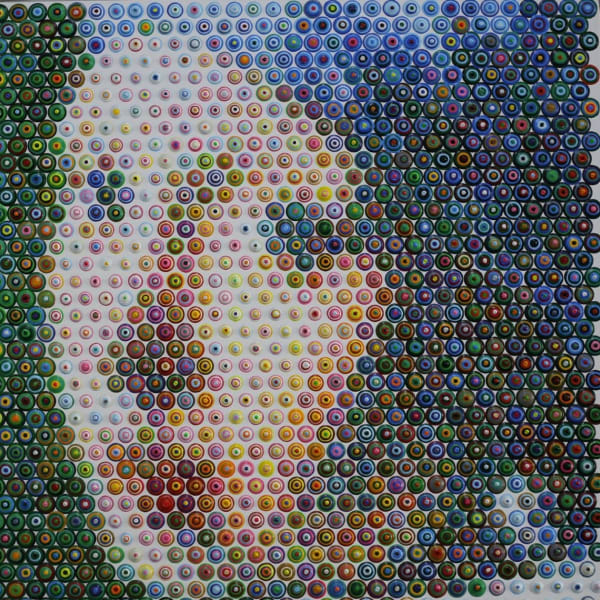Gavin Rain South African, b. 1971
Works
Biography
Gavin Rain was born in Cape Town in 1971. He studied Art and Neuropsychology at the University of Cape Town in the '80s and '90s. Rain has been painting his whole life, but started with pointillism around 2003, is influenced by Seurat, Russian avant-garde artist of the 1900s, and many different architects. Earlier in his life, he planned to study architecture, to try and combine his two interests: art and mathematics.
Rain’s objective is to broaden people’s visual and cognitive horizons by showing them the fantastic and impossible. By combining his origins, his studies, aptitudes and personal talent, Rain has invented an art that is both unique and participative so that all who look at one of his paintings can perceive the convergence of two opposing pictorial styles: the abstracted concentric circles that thicken into dense and imperfect dots in relief, and the figurative aspect of the image that is defined by the sum of these same dots as the viewer takes a few steps back.
It is precisely in this backing-off that the artist’s intended message lies: in order to acquire the awareness of something that is concealed yet right in front of your eyes or hidden in plain sight, you must distance yourself by moving backward. His art is a clear invitation to ‘back off’, to create some distance in life as well, because as Gestalt psychology sustains, the whole is greater than the sum of the parts. We must view the big picture, the whole, without worrying about isolated events or individual points of view.
Rain’s objective is to broaden people’s visual and cognitive horizons by showing them the fantastic and impossible. By combining his origins, his studies, aptitudes and personal talent, Rain has invented an art that is both unique and participative so that all who look at one of his paintings can perceive the convergence of two opposing pictorial styles: the abstracted concentric circles that thicken into dense and imperfect dots in relief, and the figurative aspect of the image that is defined by the sum of these same dots as the viewer takes a few steps back.
It is precisely in this backing-off that the artist’s intended message lies: in order to acquire the awareness of something that is concealed yet right in front of your eyes or hidden in plain sight, you must distance yourself by moving backward. His art is a clear invitation to ‘back off’, to create some distance in life as well, because as Gestalt psychology sustains, the whole is greater than the sum of the parts. We must view the big picture, the whole, without worrying about isolated events or individual points of view.



